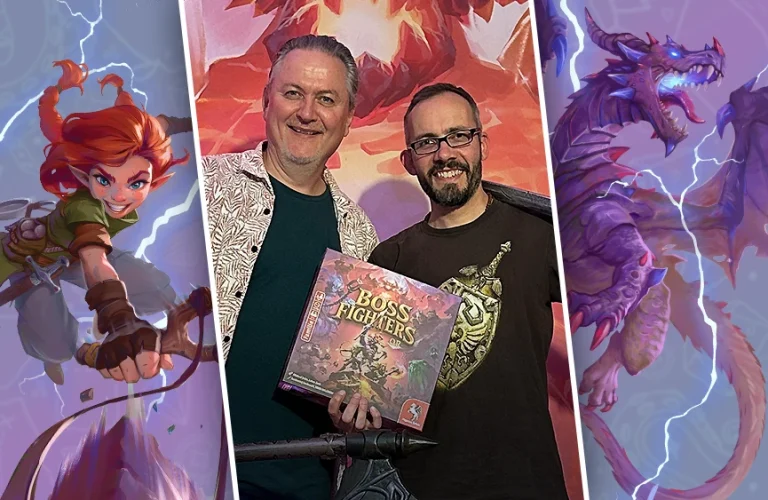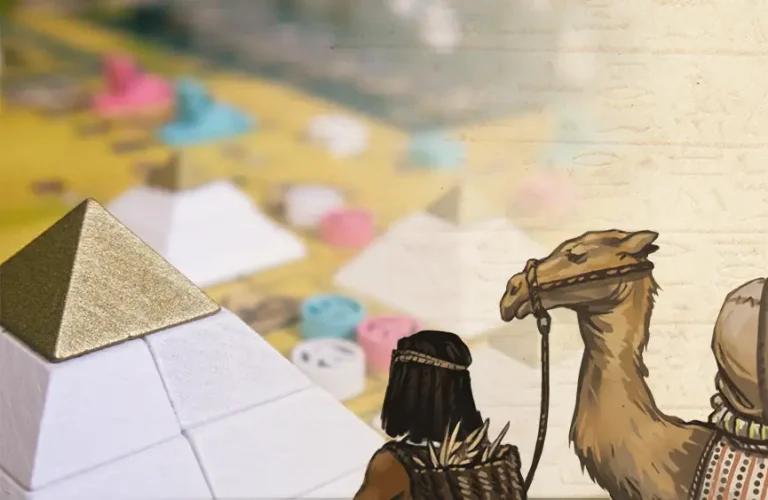Content
Castles, knights, monks, peasants … what do you think about when you think of medieval times? We, of course, think of games! In fact, the Middle Ages, stretching from the 6th to the 15th century offer a wonderful and often-used thematic background for numerous game mechanisms. BoardGameGeek lists around 5.000 games under the category “Medieval”. Some of the games refer to the historical era, others use the Middle Ages as a pseudo-historical foundation for elements of fantasy. Aside from the actual topic or the historical background, other factors like illustrations play into a game being perceived as medieval. So, what does a game need for you to associate it to the Middle Ages?

The Middle Ages in Historical Games
Some games specifically contextualize themselves in medieval time by mentioning dates or names. This is the case, for example, with Hansa Teutonica, which – as the Latin name already suggests – refers to the Hanseatic League. The Hanseatic League was a confederation of Low German merchants that existed from the 12th century until the 17th century. Cities that were part of this union were (and on occasion still are) referred to as Hanseatic Cities. Since the League was a rather lose tie and not based on any written contracts, it is difficult to judge which cities exactly were part of it, especially since much can change during a 500 year long existence. Against this background, you take on the role of merchants and aim to increase your reputation – whether you want to establish trading posts, build a network of linked cities or improve your merchant abilities is up to you. During your turn, you carry out actions and can, for example place or move your traders and merchants or even displace opposing ones. If you manage to occupy all of the connections between two cities, you can create a new trade route and establish a new trading post. The person who ends up with the most prestige points wins. If you want to know more about the game and its historic background, take a look at our blog post on the development of the Hansa Teutonica Big Box.
The family game Von Falkenstein, which is set in the 14th century near the present-day headquarters of Pegasus Spiele, combines the stories of historical people and places with the mechanisms of the popular children’s game Wizardry to the power of three: Only if you manage to remember the best route to the safe castle, you can escape the dire knight who is pursuing you and defend the castle against him. Once you have decided whether you want to play the story “Ambush at Münzenberg Castle” or “Revenge of the Rockenberger Robber Barons”, the fate of Philipp von Falkenstein and your own castle is in your hands.
UNDO – Long Live the King takes a slightly different approach. While the family game is explicitly set at the English court of the 13th century, it tells a fictitious story. At 1256’s Royal Banquet in honor of the late queen, the atmosphere is tense because the mourning king is without an heir and some attendants hope for a chance to reach for the crown. The king lifts his cup, takes a sip and collapses – someone has poisoned him! Your task is not to find out what happened or whose fault it is, but to prevent this fatality as disembodied weavers of fate. In order to do so, you carry out time jumps and make difficult decisions which ultimately decide whether the court can be heard shouting “Long live the king!” or “The king is dead!”. By the way: Henry III, the actual king of England in 1256, lived on until 1272. When he died after a 56 year long reign, the longest one in medieval England, the throne passed to his firstborn son.
The Undefined Era
Other games generate associations with the Middle Ages simply by using certain topics. One of those games is Beer & Bread which was recently released by Deep Print Games. Even though it is never mentioned when the game is set, the cover illustrations and topic remind us of medieval times right away. You play as the heads of two villages which were founded on the prolific lands of a former monastery. In a rivalry with the neighboring village, you have to brew the most delicious beer and bake the best bread – and find a balance between the two.
A Battle Through History – An Adventure with Sabaton does not define either which historical periods you visit as Sabatons (time-travelling storytellers). Instead, military units are divided into four Eras according to their technological advancement and independently from their actual chronological appearance in history. An additional booklet provides information on the units, amongst which you can also find medieval ones, of course. For example, Bedford’s Mangonal, catapults used in the siege of Bedford, in which Henry III was involved (you remember – the longest reigning monarch of medieval England). In the second Era, you can also find medieval units like the Black Prince’s Infantry which fought for Edward of Woodstock in the 14th century, who is now better known as the Black Prince. You can also come across military groups from the same time which were not based in Europe.
On the subject of “non-European”: Our image of the Middle Ages is obviously influenced by our central European educational background. So whenever we talk about something being “typically medieval” this could mean something entirely different to people with different backgrounds. This is also reflected in board games, especially ones by European designers, which are often inspired by the (central) European Middle Ages. Obviously, there are also many games that deal with the Middle Ages in other parts of the world, for example, the Asian Middle Ages in Gùgōng.

Fantasy Games Inspired by Medieval Times
Of course, the medieval association is stronger or more obvious in some games rather than others. In the children’s game Fabulantica you travel through the fabulous, fictious world of Fabulantica. After a spell done by an apprentice sorcerer has gone wrong, the inhabitants of this magical land find themselves dispersed all over the place – and it is your job to find them while training your memory at the same time. What characterizes Fabulantica as at least kind of medieval? Mainly the illustrations of castles, knights, princesses and more common associations with the Middle Ages. But then there are also magical creatures like dwarves and witches and dragons. More kinds of monstrous creatures can be found in Monster Inn. You play as dungeon masters looking to hire battle-hardened monsters in the local tavern. By bidding gold coins and gems, you try to build the strongest group of monsters while avoiding, or at the very least defeating, human intruders. In every round of the family game, creature cards with monsters and humans of varying values are revealed. Obviously, you only want to hire the most powerful monsters and shove the nasty, useless humans on to your rivals. Before you complain that this is clearly a fantasy game – we agree. But if you had to put a finger on when it was set during the history of humanity, you would probably choose the Middle Ages, right? If the cover illustration, the tavern and the gold coins have not convinced you, surely the monsters will. After all, we all know that back then dragons and co. were still lurking about.
As you can see, the Middle Ages are a very multifaceted theme which is useful for games as it can be combined with many different mechanisms as well as additional themes. There are common images which many of you associate with the era, like knights and castles, but you should always keep in mind that a game cannot (and might not aim to) portray a whole period without mistakes or bias – and in the end, the theme should work well with the mechanisms. You are now ready to take a trip to medieval times yourself? Then off you go to your game collection where you can probably find a game or two which can take you back. We hope you have fun playing (medieval) games!
Questions, comments, feedback? Share your thoughts with us at blog@pegasus.de.






